The natural rainstorm events have increased greatly in recent years, and the impacts caused by rainwater runoff has received much attention. Many runoff experiments on pavement surfaces have been carried out to study the relationship between the water film thickness (WFT) and influence factors, and the empirical equations were derived from those experiments’ data[1]. The WFT can also be obtained by the BP neural network model[2]. On the basic theories of flow continuity equation and momentum equation, Chen[3] established a complex theory equation to calculate the WFT on pavement. A theoretical equation with a simple form was proposed by using the Chézy equation and Manning equation[4].
The 1D numerical model is an efficient tool to calculate the runoff depth. The variation of runoff depth was simulated under different rainfall intensities by embedding a DeSaint Venant runoff model into the SWMM model[5]. With the assumption of 1D flow conditions, the empirical PLANUS model was developed to present the water film distribution of sheet flow[6]. Kinematic wave equation acted as a governing equation in model building in the earlier study[7]. However, most of 1D models over-predicted WFT since only the bottom slope was considered, momentum and horizontal pressure gradient were ignored[8].
Runoff characteristics are also popularly presented by multi-dimensional numerical simulation. Tan et al.[9] used the SEEP 3D to analyze the effects of road geometric properties and rainfall intensity on pavement drainage characteristics. Flow 3D can simulate the flow patterns around inlets and evaluate the grated inlet performance[10]. Charbeneau et al.[11] stated that the location of the maximum ponding depth at the curb depended on the longitudinal slope at superelevation transition. Jeong et al.[12] suggested that the transverse slope, longitudinal slope, rainfall intensity and pavement width have an obvious effect on the distribution of sheet flow at superelevation transition. Ressel et al.[13] developed the pavement surface runoff model to simulate the flow of pavement surface runoff.
Most studies focused on pavement runoff distribution by using different methods, and few studies focused on the characteristics of bridge deck runoff under natural rainfall events. Due to the impermeability of bridge deck and inefficient drainage systems, bridge deck runoff is more likely to occur. However, in order to protect bridge structures, their drainage requirement must be higher than that of highways. Moreover, more instabilities and risks are aggravated by the natural rainfall intensity. Thus, it is meaningful to analyze the spatiotemporal distribution of bridge deck runoff under a natural rainfall event.
1 Methods and Materials
1.1 Numerical model
The pavement runoff is a free surface flow, and the water depth is far less than the flooded area, which matches with the applicable conditions of 2D shallow water equations. When vertical flow velocities and vertical derivatives of pavement runoff are negligible, the assumption of hydrostatic pressure can be applied to shallow water equations, which leads to the 2D depth-averaged shallow water equations:


(1)
where x,y are the coordinates of the pavement surface; g is the gravity constant , m/s2; h is the water depth, m; u and v are the average velocities of x and y directions, respectively, m/s; Sox and Soy are the bed slope source terms; Sfx and Sfy are the friction source terms; and q is the source discharge per unit plan-surface area, m3/s.
The unstructured finite-volume method and Roe’s approximate Riemann solver are applied in this numerical model. This model is robust and can predict different types of flows including subcritical, supercritical, and transcritical flows. To validate this model, on-site measuring work was implemented in the project of the Shen-Shan expressway. The runoff depth on the expressway surface and rainfall intensity were measured. As shown in Fig.1, the simulation result states a good consistency with the measured runoff depth on the existing pavement[14]. Thus, this model is effective.
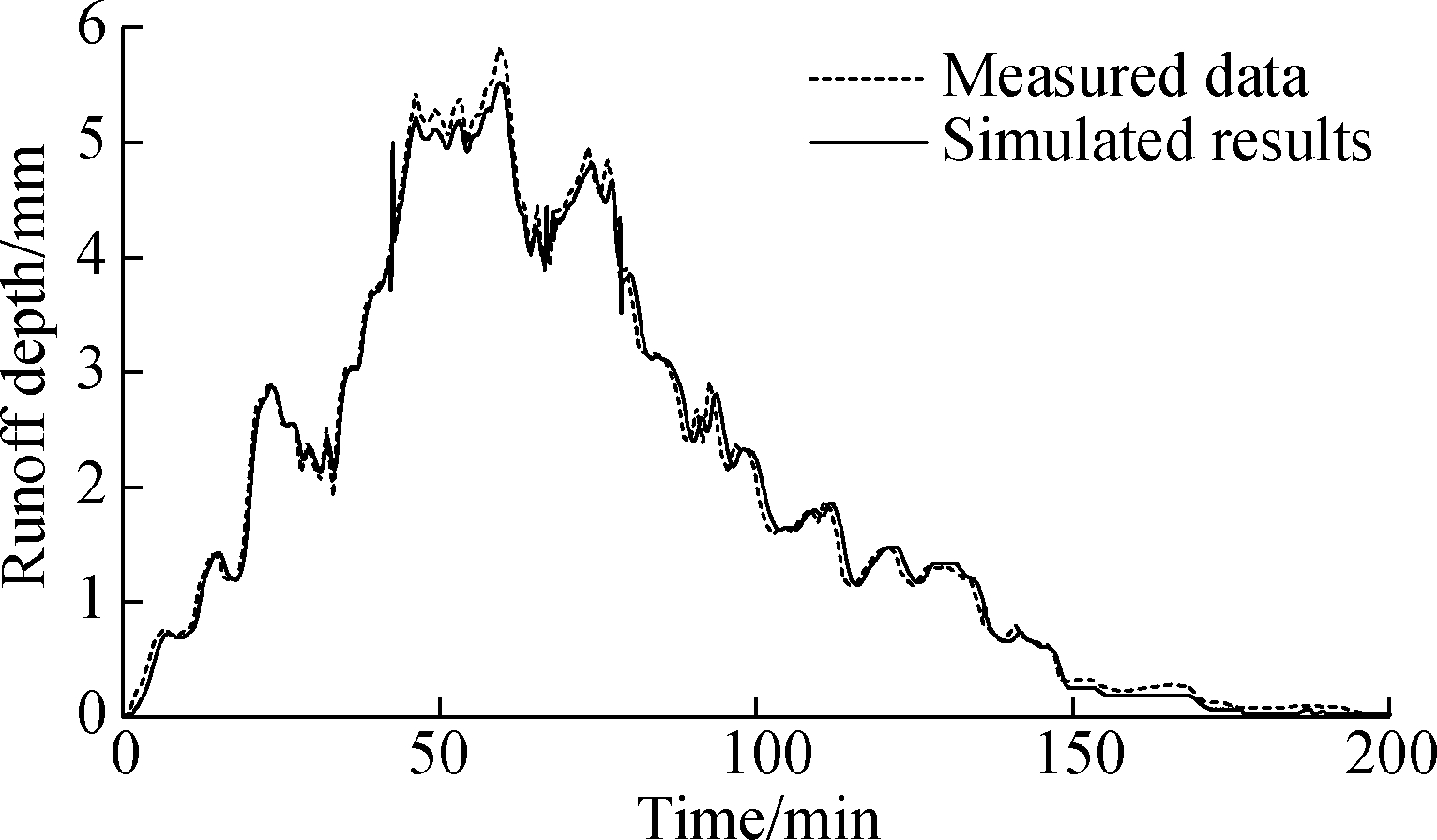
Fig.1 Simulated results and measured data of runoff depth on the existing pavement
1.2 Study area and basic data
Connecting three big cities, the maximum traffic flow of Taizhou Bridge is about 100 thousand vehicles per day. Owing to the symmetry of the plane layout, only 1/4 bridge is simulated. Undepressed curb-opening inlets with equal spacing are set to receive bridge deck runoff. A longitudinal gutter is arranged at the longitudinal edge of the bridge to accept the flow from inlets. The specific design parameters of the numerical simulation are tabulated in Tab.1. At the end of bridge approach slab, the highway with a length of 25 m, a longitudinal slope of 0 and a traverse slope of 2% is included in this simulation.
Tab.1 Design parameters of numerical bridge model

ParameterValueBridge length/m1 080Lane width/m11.25Undepressed inlet/(m×m×m) 0.35× 0.1 ×1.7Bridge width/m19.55Shoulder width/m3.00Height of curb/m0.155Longitudinal slope/%2.50Traverse slope/%2.00
The numerical bridge model and plane layout are shown in Fig.2. The open boundary conditions are applied to all boundaries in the simulation. The maximum cell size is 0.4 m2; the minimum cell size is 0.01 m2; the time step is 0.20 s; and the Manning coefficient is 0.016. Fig.2(a) also depicts the spatial positions of sections and the measuring points which are used to analyze the bridge deck runoff, and their detail coordinates are displayed in Tab.2 and Tab.3.
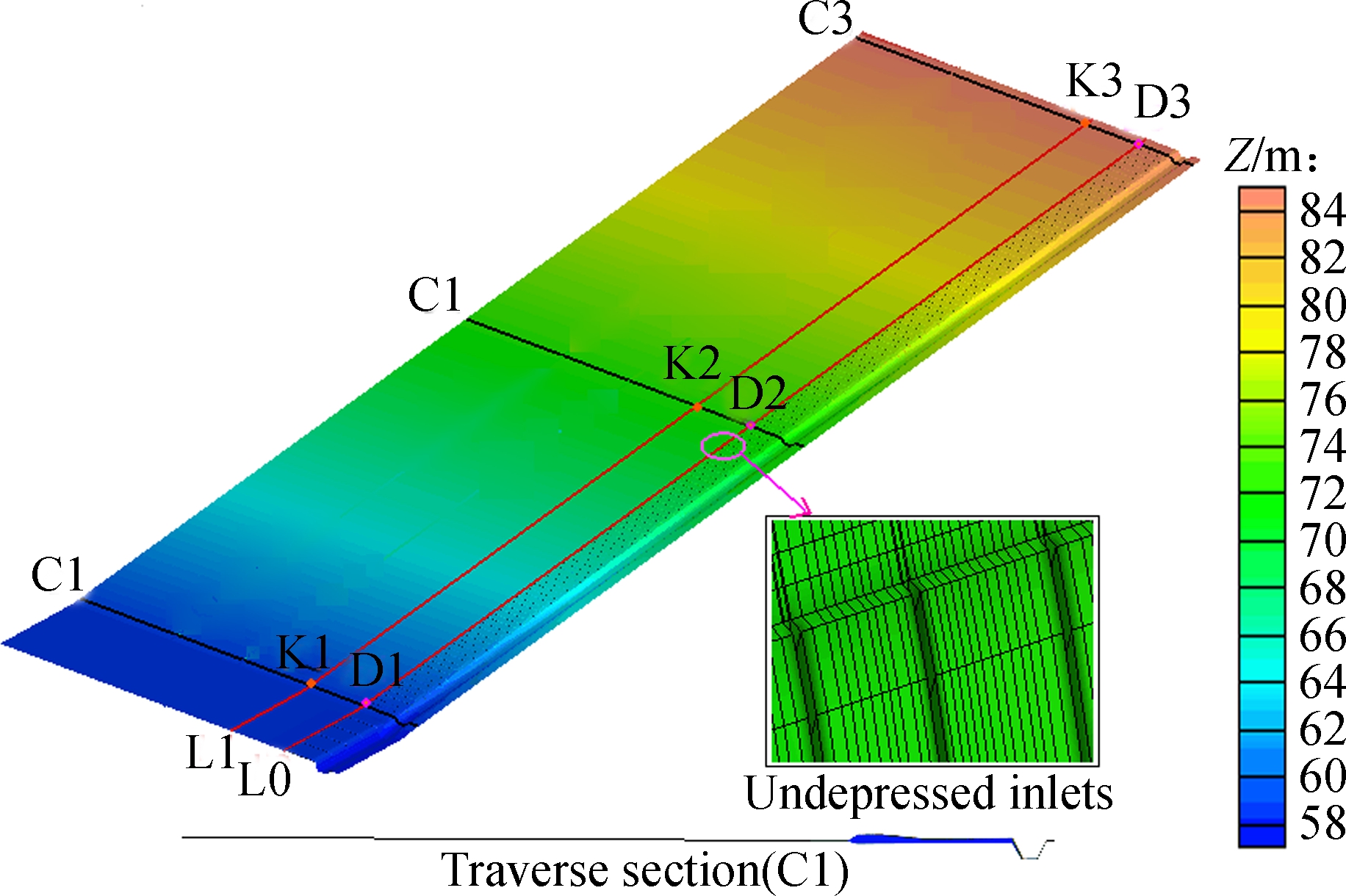
(a)

(b)
Fig.2 Numerical model of Taizhou Bridge.
(a) Numerical model and location annotation; (b) Plane layouts of bridge (unit:m)
There was a rainstorm in Taizhou on July 4, 2012. The rainfall process is shown in Fig.3. The cumulative precipitation reached 71.50 mm, and the maximum rainfall intensity (58.20 mm/h) appeared at 03∶46. Extreme weather has become more frequent in recent years, and the
Tab.2 Coordinates and annotations of observation sections

SectionCoordinates/mAnnotationL0Y=2.075Curb sectionL1Y=5.075The 1st lane edgeC1X=4The end of bridgeC2X=537The middle of bridgeC3X=1 069The top of bridge
Tab.3 Coordinates and annotations of observation points
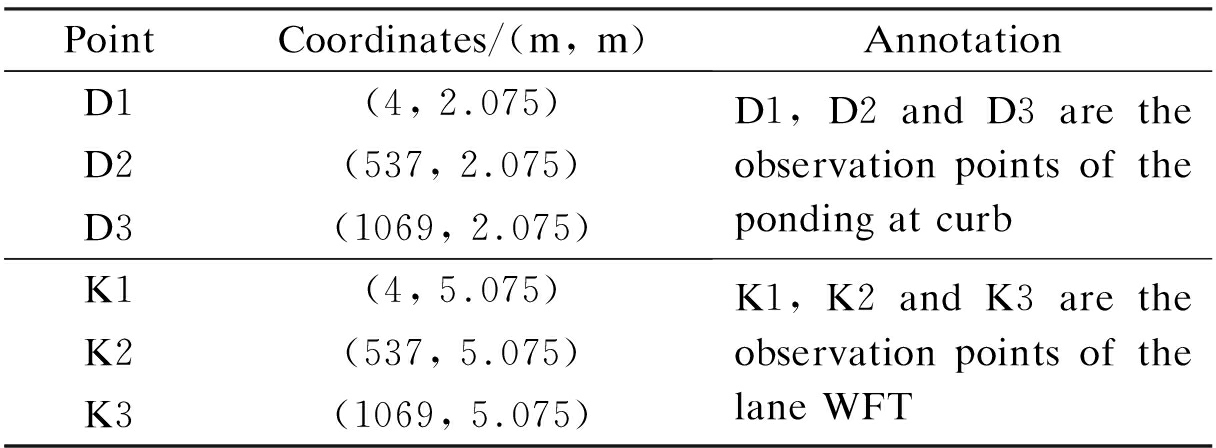
PointCoordinates/(m, m)AnnotationD1(4, 2.075)D2(537, 2.075)D3(1069, 2.075)D1, D2 and D3 are the observation points of the ponding at curbK1(4, 5.075)K2(537, 5.075)K3(1069, 5.075)K1, K2 and K3 are the observation points of the lane WFT
natural rainfall intensity has increased significantly[15]. In order to ensure the safety margin of the system, this rainstorm event was chosen as the model dynamic boundary condition.

Fig.3 Rainfall intensity on July 4, 2012
2 Results and Discussion
2.1 The temporal distribution
A significantly positive association is observed in Fig.4 between the ponding depth at the curb and the rainfall intensity, while compared to D1 and D2, D3 is clearly lower. Meanwhile, as shown in Tab.4, the maximum ponding depth (29.99 mm) at the curb occurs at 03:49. Fig.5 shows gutter water surface profiles of different transverse sections at 03:49. It illustrates that the ponding width is not constant, and the maximum width is about 1.50 m (from 2.075 to 3.60 m in the X direction). The shoulder width of the bridge deck is 3.00 m, which indicates that the ponding water does not enter the lanes. Thus, the area above section L1 is the sheet flow, and the sheet flow depth is defined as WFT. The WFT of K1, K2 and K3 also displays a positive relationship with the rainfall intensity (see Fig.6). The WFT of K1, K2 is slightly larger than that of K3, and the maximum WFT (1.64 mm) occurs at 03:47.
Tab.4 gives the specific values of the runoff depth. There is a time interval of 1.00 min with a rainfall intensity of 58.20 mm/h between the peak of the rainfall intensity and lane WFT, which is the sheet flow travel time

Fig.4 Variation of ponding depth at curb
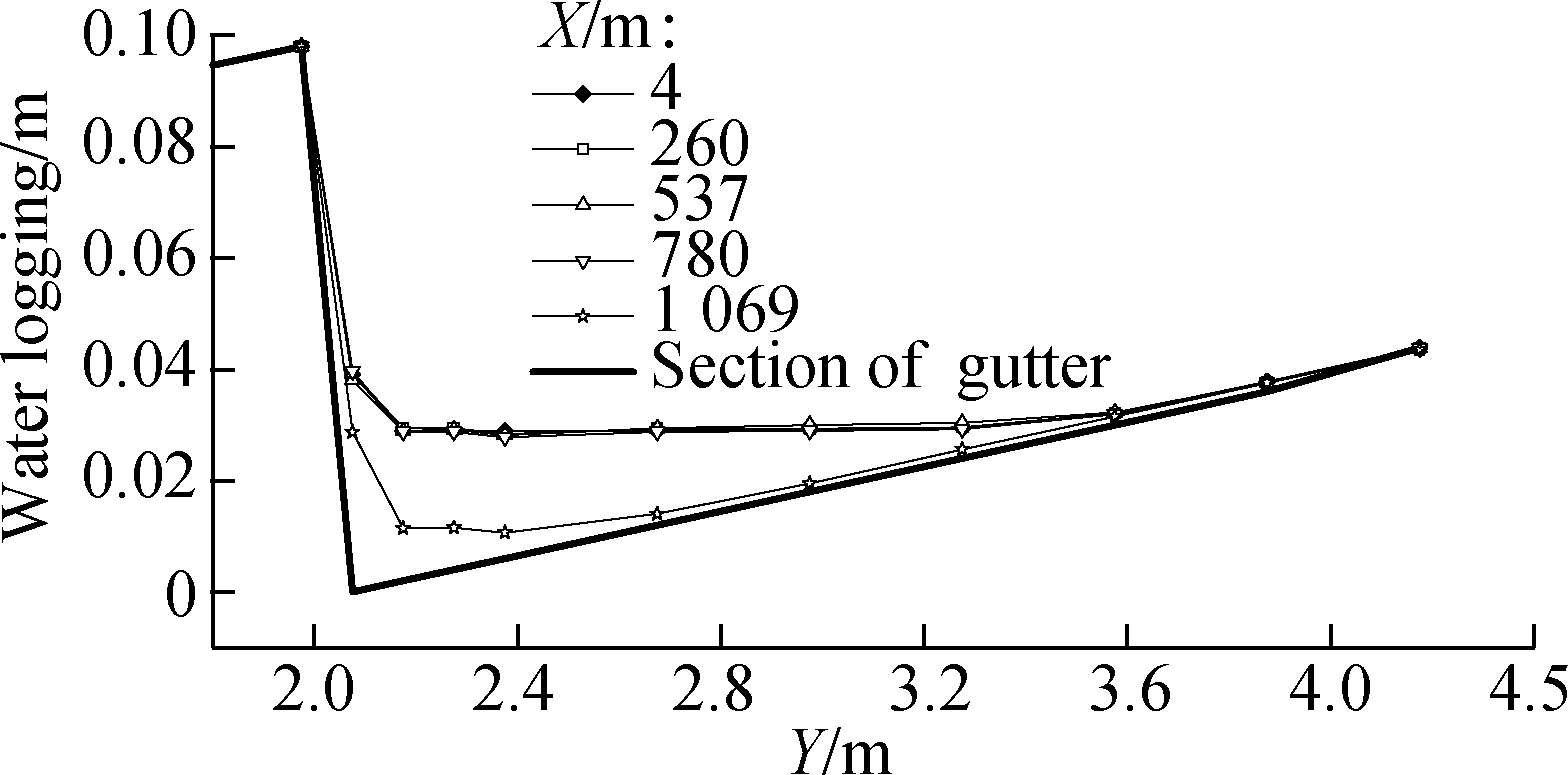
Fig.5 Ponding width at different transverse sections at 03:49

Fig.6 Variation of lane WFT
Tab.4 Runoff depth of observation points during the heaviest rainfall time segment
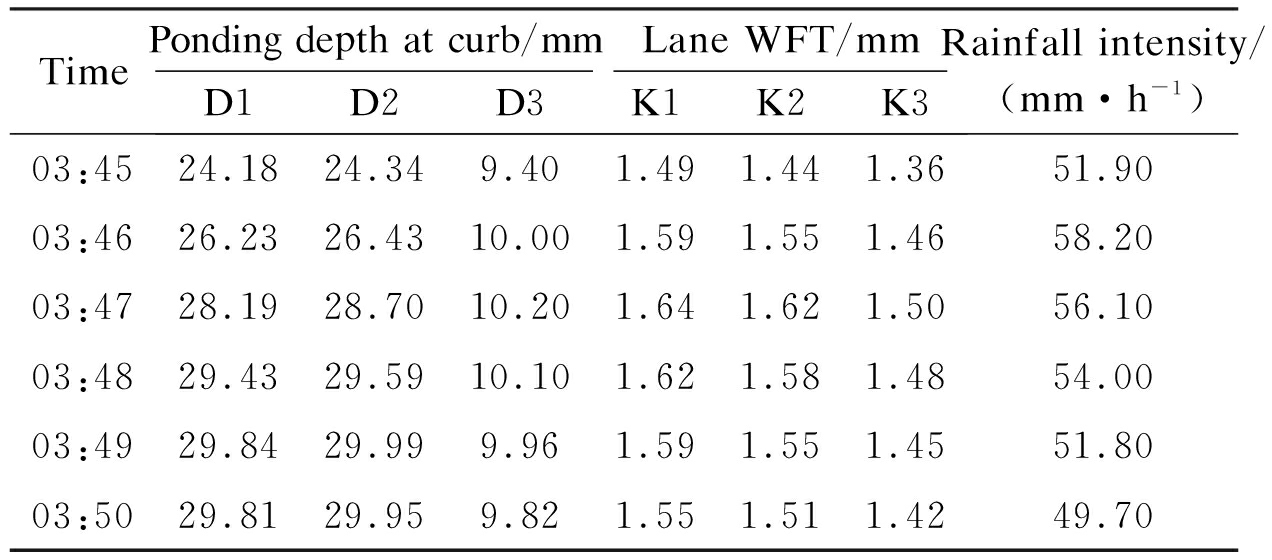
TimePonding depth at curb/mm Lane WFT/mmD1D2D3K1K2K3Rainfall intensity/ (mm·h-1)03:4524.1824.349.401.491.441.3651.9003:4626.2326.4310.001.591.551.4658.2003:4728.1928.7010.201.641.621.5056.1003:4829.4329.5910.101.621.581.4854.0003:4929.8429.999.961.591.551.4551.8003:5029.8129.959.821.551.511.4249.70
for the lane WFT. Hydraulic engineering circular (HEC) 22[16] is widely used in the design of highways and bridges in the US[17]. The sheet flow travel time calculated by HEC-22 method is 1.72 min. The kinematic wave equation with non-optimal coefficients and the simplified momentum equation are used in the HEC-22 method[18], which causes the over-estimation of the sheet flow travel time. According to General Specifications for Design of Highway Bridges and Culverts (JTG D60—2015)[19] in China, the sheet flow travel time is 1.75 min, which also over-estimates the sheet flow travel time. It is unfavorable to the drainage design of bridge if this time is over-estimated.
We also found that the velocity of the observation points have similar changing laws to the ponding depth at the curb and lane WFT. Thus, this study only presents partial velocity results in Tab.5 and Tab.6, which shows that the velocity and runoff depth reach the maximum value at the same time. The curb obstructs the runoff flow of D1 and D2 in the Y direction. Thus, Vy is close to 0. D3 is the observation point directly above an inlet, the runoff can flow into the inlet, so Vy of D3 is not 0. On the other hand, the direction of velocity can be calculated by Vy/Vx. Except for D3, the direction of velocity is almost constant with the rainfall intensity changing. Moreover, the velocity direction of D1 is almost the same as that of D2, which also exists in K1, K2 and K3. Meanwhile, since the longitudinal slope is larger than the traverse slope, the Vy of K1, K2 and K3 is larger than that of Vx.
Tab.5 Velocity of D1, D2 and D3
m/s
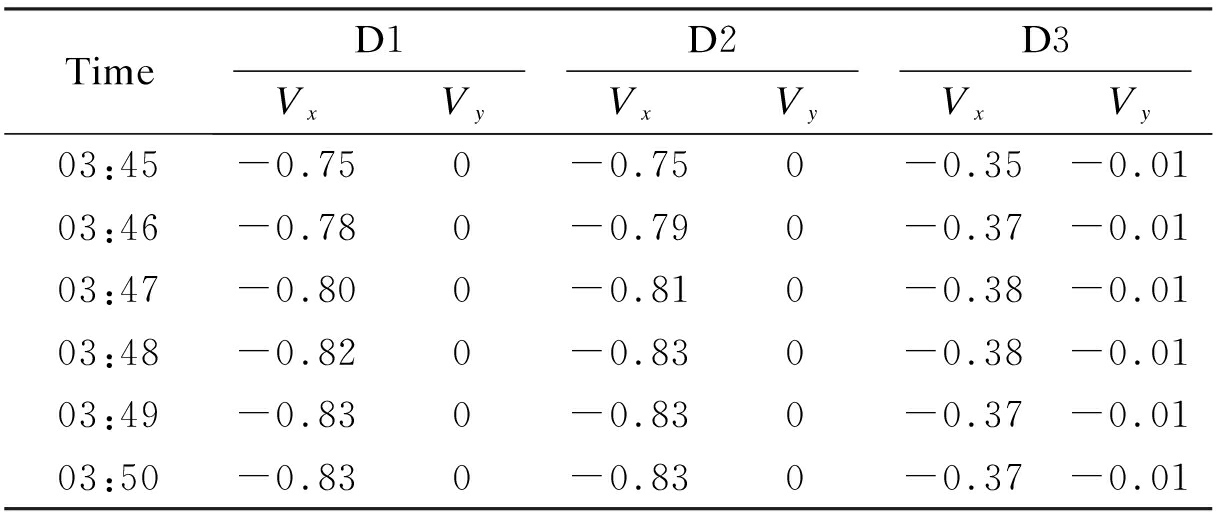
TimeD1D2D3VxVyVxVyVxVy03:45-0.750-0.750-0.35-0.0103:46-0.780-0.790-0.37-0.0103:47-0.800-0.810-0.38-0.0103:48-0.820-0.830-0.38-0.0103:49-0.830-0.830-0.37-0.0103:50-0.830-0.830-0.37-0.01
Tab.6 Velocity of K1, K2 and K3
m/s

TimeK1K2K3VxVyVxVyVxVy03:45-0.03-0.05-0.03-0.05-0.03-0.0503:46-0.04-0.06-0.04-0.05-0.03-0.0503:47-0.04-0.06-0.04-0.06-0.03-0.0503:48-0.04-0.06-0.04-0.06-0.03-0.0503:49-0.04-0.07-0.04-0.05-0.03-0.0503:50-0.03-0.05-0.03-0.05-0.03-0.05
It is summarized that the ponding depth at the curb, lane WFT and velocity rate are positively related to the rainfall intensity. In order to compare their changes in the time dimension, the variation coefficient of the above three runoff parameters is calculated by
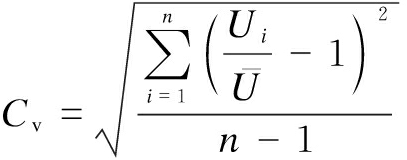
(2)
where Cv is the dimensionless parameter; Ui is a sample series of one of the runoff parameters; ![]() is the mean value of the sample series; n is the length of the data set.
is the mean value of the sample series; n is the length of the data set.
The value of Cv reflects the response degree of runoff parameters to rainfall intensity. In this study, the change of the above three runoff parameters is caused by the change in rainfall intensity. A smaller Cv indicates relatively stable runoff characteristics, and runoff characteristics have a slower response to the rainfall intensity. Conversely, a higher Cv indicates that the runoff characteristics are severely volatile and have a faster response to the rainfall intensity.
Tab.7 Coefficient of variation of runoff parameters

Observation pointsCoefficient of variation CvD1D2D3K1K2K3WFT0.680.670.68Ponding depth at curb0.710.710.69Velocity rate0.660.660.760.790.790.81Direction of velocity0.050.050.050.180.180.18
It is obvious that the Cv of velocity direction is very low, which indicates that the direction of velocity of runoff is relatively stable. The other three are relatively high, they are volatile and have higher research significance. The Cv of WFT(K1, K2 and K3) is lower than that of ponding (D1, D2 and D3). Meanwhile, for the velocity rate, the Cv of K1,K2 and K3 is higher than that of D1,D2, and D3. This indicates that the WFT of K1, K2 and K3 has relatively weak variability in the time dimension. However, their velocity rates are more volatile than those of D1, D2 and D3.
The simulation results point out that the temporal distribution of bridge deck runoff is changing in real-time, and the runoff parameters have a positive relationship with rainfall intensity; however, their response degrees to rainfall intensity are different, and there are also spatial differences. Furthermore, the typical methods in specifications lead to an over-estimation on the sheet flow travel time.
2.2 The spatial distribution
In order to explore the spatial distribution laws, the result of section L0 and L1 at 03∶50 is extracted and demonstrated in Fig.7. The direction of runoff velocity is relatively stable. Thus, the direction of velocity is not the key. This study focuses on the ponding depth at the curb, the lane WFT and the velocity rate.
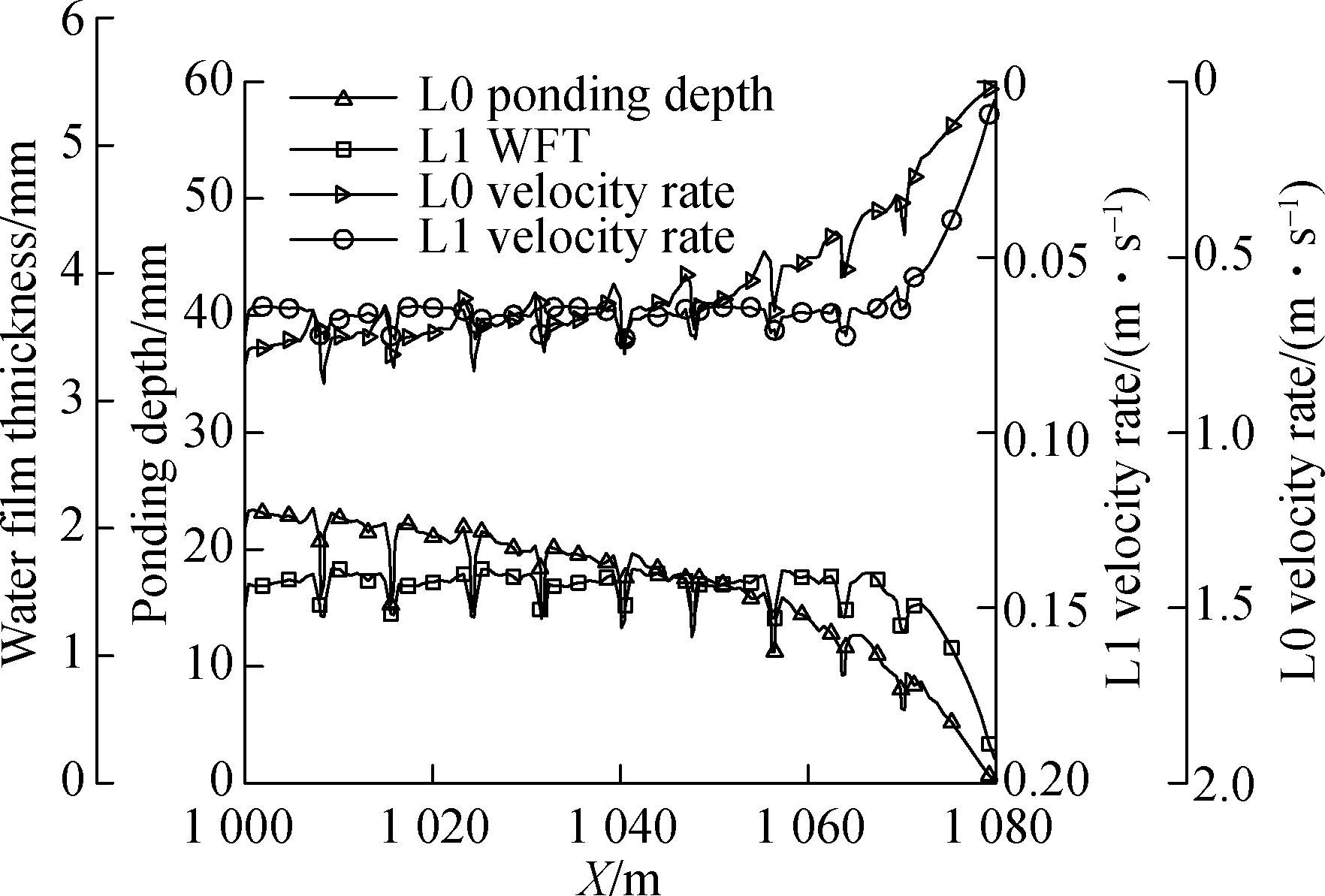
Fig.7 Results of L0 and L1 along with X at 03∶50
Figs.7 and 8 demonstrate that inlets can affect the runoff distributions, and the changes of the runoff distributions keep stable after rainwater concentrates. W1 (544.23, 5.075) is the observation point above the inlet where the minimum lane WFT occurs, and P2 (546, 2.075) and W2 (546, 5.075) are the observation points where the maximum runoff depth occurs. In order to quantify the inlet’s effects on the distribution of bridge deck runoff, the above observation points are extracted to calculate the effect degree.
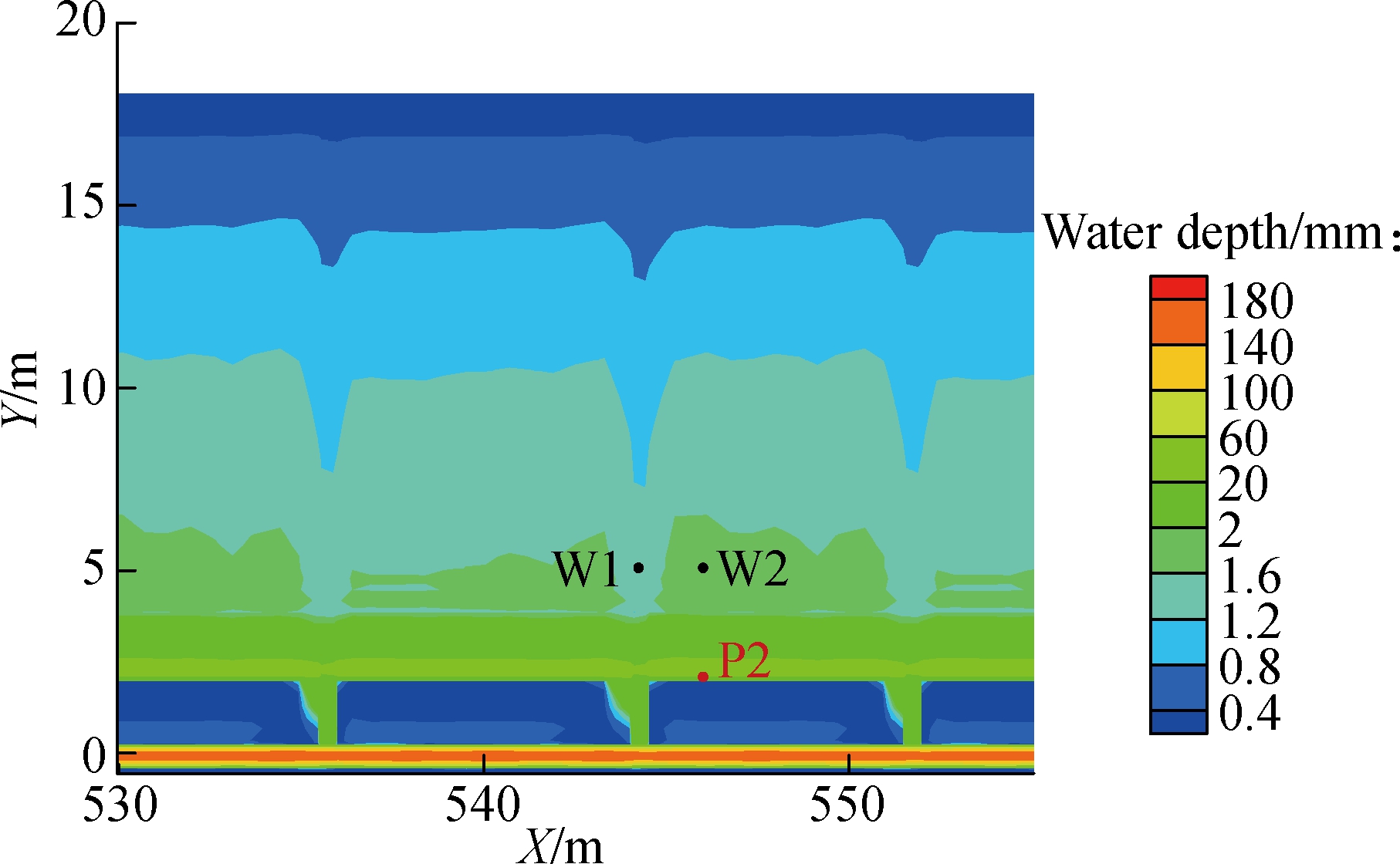
Fig.8 Spatial distributions of runoff at 03∶50
The velocity of sheet flow is calculated by the Chézy equation and Manning equation:
(3)
(4)
where V is the velocity of sheet flow, m/s; C is the Chézy coefficient; R is the hydraulic radius, m; and J is the hydraulic gradient.
The lane WFT and velocity rate can be comprehensively represented by the unit discharge of sheet flow Qu (m3/s):
(5)
For the sheet flow, R is the lane WFT, and J is the slope of bridge deck.
When two observation points have the same Y coordinates, their unit discharges are equal if there are no inlets on the curb. However, due to the effect of the inlets, their unit discharges are different, and the effect degree of inlet on lane water film mf (%) is
(6)
where {X1,Y} and {X2,Y} are the coordinate of observation points; h{X1,Y} and h{X2,Y} are the lane WFT of points, m. In this paper, the two points are W1 and W2, respectively.
The ponding depth at the curb and the velocity rate can be comprehensively represented by the gutter discharge. In accordance with HEC-22 and Schalla’s study[20], the interception efficiency of the inlets is a perfect parameter to evaluate the inlet’s influence on the ponding at the curb:
(7)
(8)
(9)
where md is the effect degree of inlet on the ponding at curb, %; n is the Manning coefficient; SL is the longitudinal slope; Sx is the transverse slope; yp is the ponding depth at the curb, m, in this paper, yp is the ponding depth of P2. Qa is the gutter flow, m3/s; LT is the curb opening length required to intercept 100% of the gutter flow, m; L is the curb opening length, m, and in this paper, L= 0.35 m.
Using Eq.(6) and Eq.(9), mf and md can be calculated. From the comparison in Fig.9, mf has a positive relationship with rainfall intensity; when md is opposite, the relationship is negative.
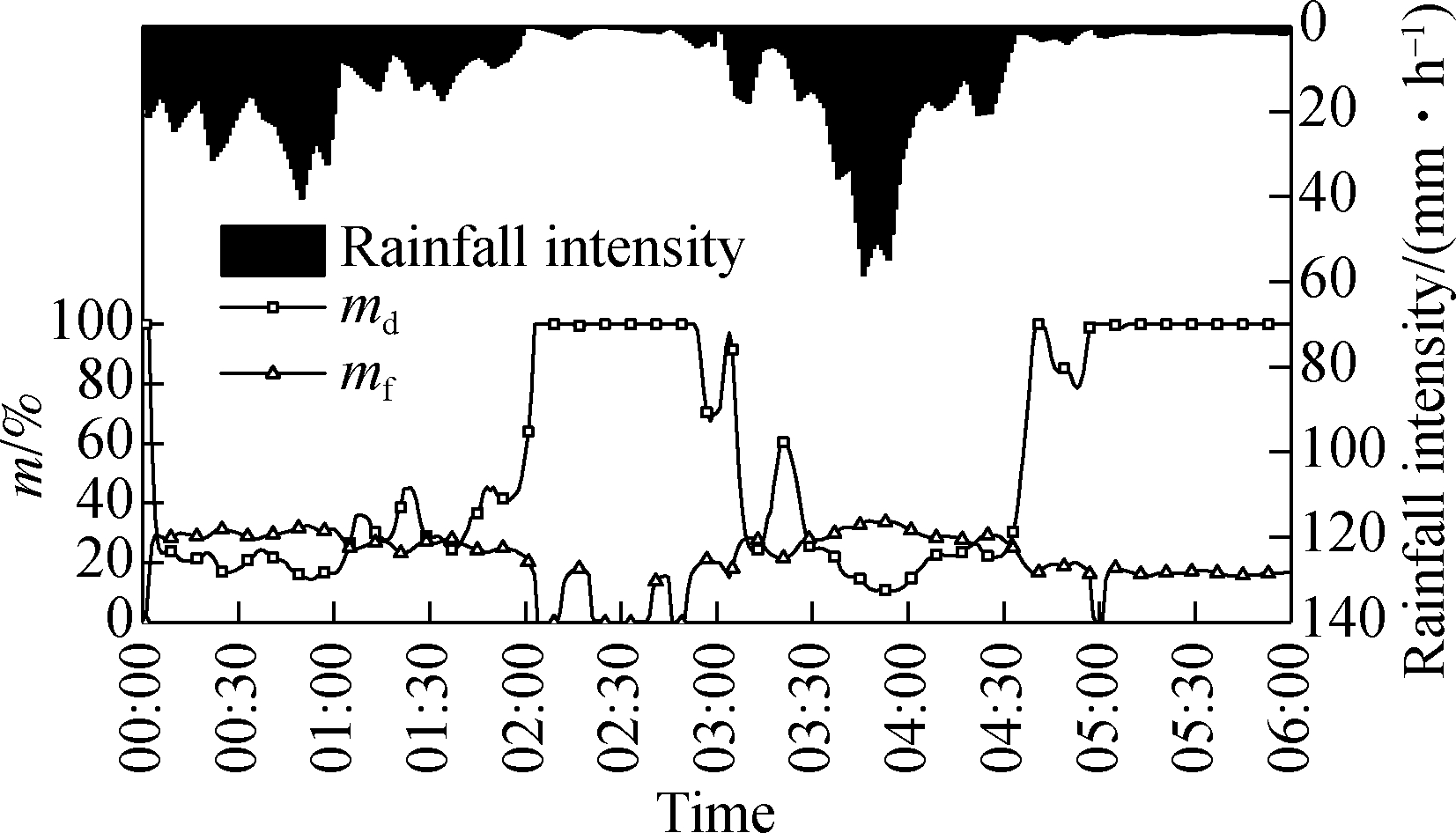
Fig.9 Variations of md and mf along with time
Based on a large amount of objective data, the regression method is the most representative and it is widely applied when exploring the related law among different parameters. Consequently, it is also used to reflect the trends of md and mf with the changes of rainfall intensity. Fig.10 illustrates that R2 (goodness-of-fit) is 0.824 for md, and R2 is 0.706 for mf for Taizhou Bridge. During a natural rainstorm process, the inlet’s effects on lane WFT and the ponding depth at the curb have a nonlinear quantitative relationship with the rainfall intensity.
2.3 Characteristics of bridge approach slab runoff
At the end of bridge, the bridge approach slab is designed for the transition of SL to prevent bumping. Bridge approach slab runoff is heavy for large span bridges after the rain concentrates. Accordingly, bridge approach slab will come under obvious attack. Ponding with a larger area is one of the significant impacts when SL decreases.

(a)
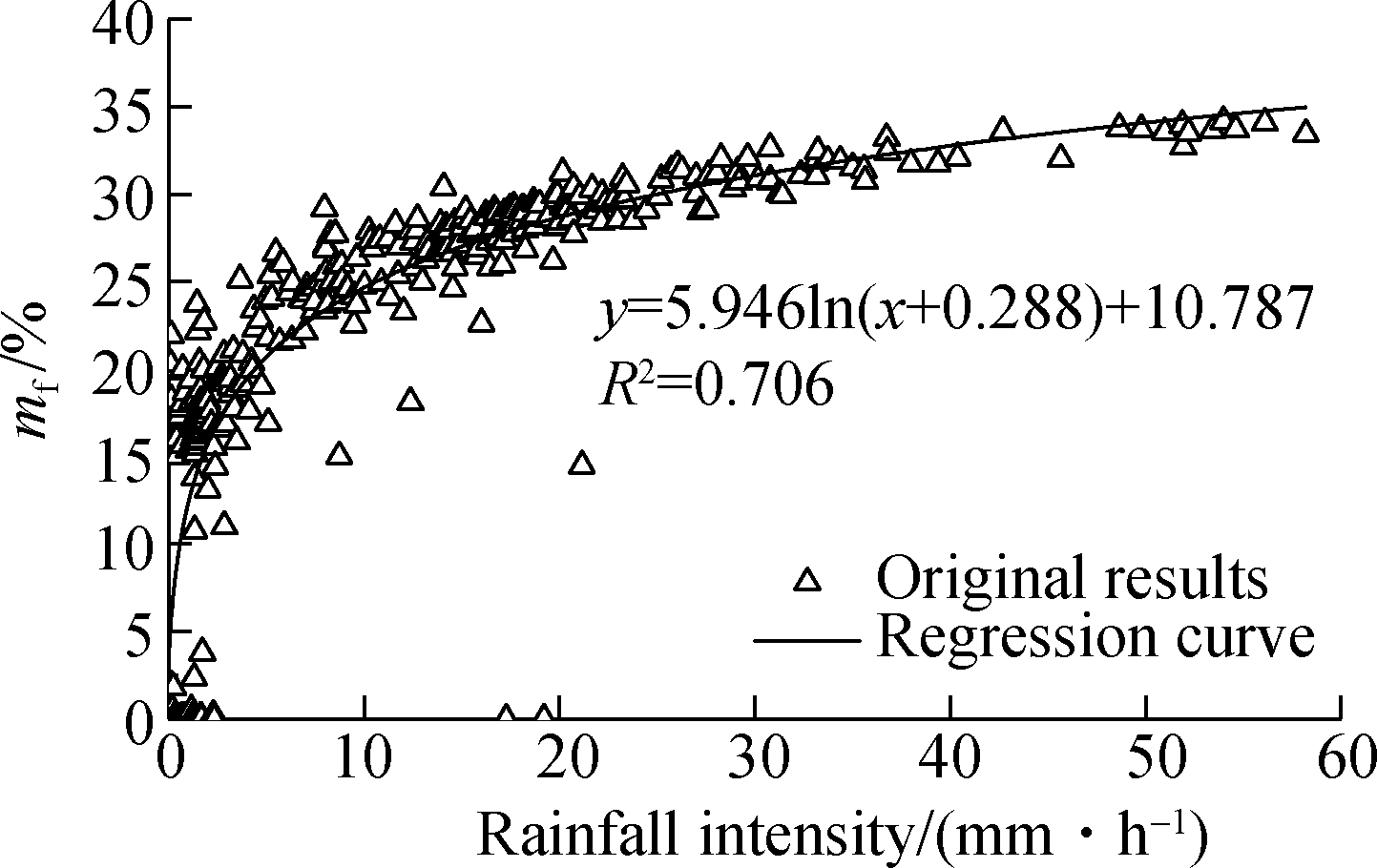
(b)
Fig.10 Performance of regression equations.
(a) md vs. rainfall intensity; (b) mf vs. rainfall intensity
In this simulation, the bridge approach slab is divided into three transition segments (from 0 to -15 m in the X direction) and SL ranges from 2.5% to 0%. T1, T2 and T3 sections in Fig.11 are used to analyze the runoff distribution with the change of SL.

Fig.11 Flow field of bridge approach slab runoff at 03∶49
As depicted in Fig.11, the streamline field presents a slight change, but it is dramatic at -15 m of X, which indicates that streamline field of bridge approach slab runoff is not sensitive to the change of SL, but it rapidly changes at the section with the minimum SL.
As shown in Fig.12, the ponding depth at the curb (T3) continues to increase from 0 to -15 m in the X direction, especially at the first three slope transition sections, and the rising trend is sharp. Then, the ponding depth at the curb decreases close to -15 m of X due to a large inlet. The results indicate that the ponding depth at curb is significantly sensitive to the change of SL and increases from 30.12 to 58.14 mm. Thus, an effective
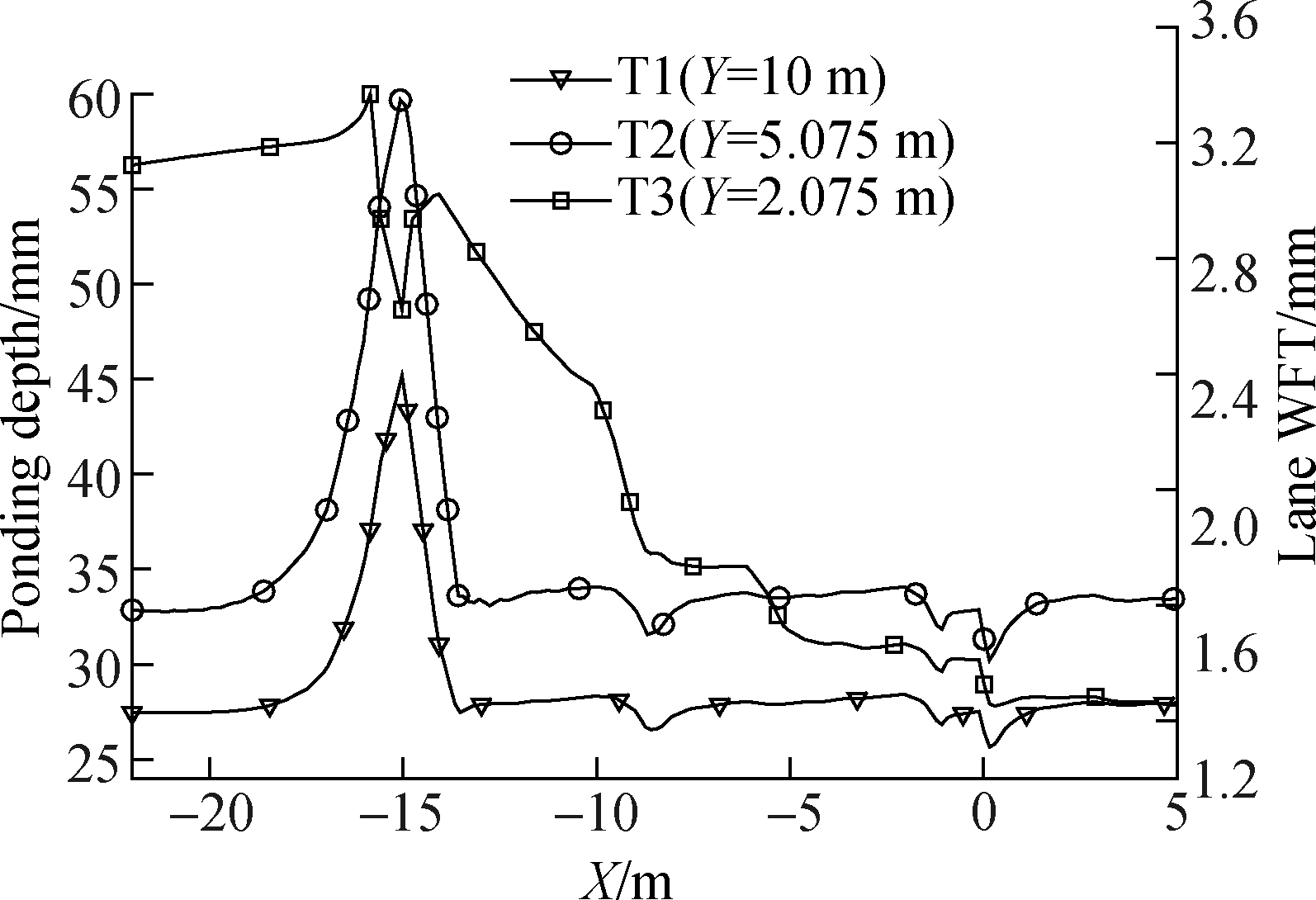
Fig.12 Runoff depth at 03∶49 with variation of T1, T2 and T3
drainage design is necessary at the bridge approach slab. On the other hand, the lane WFT (T1 and T2) only has a precipitous change near -15 m of X, and the maximum lane WFT is 3.26 mm, which indicates that lane WFT is sensitive to the location with the minimum SL. Except for the zone of sudden change, the lane WFT changes little; the lane WFT of T1 is about 1.25 mm; and that of T2 is about 1.61 mm. Thus, the lane WFT is insensitive to the gradual change of SL, which is consistent with the conclusion of Ref.[4].
3 Conclusions
1) The runoff depth and velocity rate show a positive relationship with the rainfall intensity; however, there are some differences in their response degrees to it. The obvious spatiotemporal differences are shown in the characteristics of bridge deck runoff.
2) With the change in the rainfall intensity, the inlet’s effect degree on lane water film can be described as a natural logarithm function (R2=0.706). Yet, the inlet’s effect degree on the ponding at the curb can be illustrated as a negative exponential function (R2=0.824). The inlet’s effects on bridge deck runoff show a good quantitative relationship with the rainfall intensity.
3) At the bridge approach slab, the lane WFT is insensitive to the change of SL, but it significantly increases at the location with the minimum SL. Conversely, the ponding depth at the curb is very sensitive to the change of SL. The effective drainage measures are necessary, and the location with the minimum SL needs to be paid sufficient attention at the bridge approach slab.
[1] Luo J, Liu J B, Wang Y Q, et al. Validation test on pavement water film depth prediction model[J]. China Journal of Highway & Transport, 2015, 28(12):57-63. http://zgglxb.chd.edu.cn/CN/Y2015/V28/I12/57. (in Chinese)
[2] Ma Y,Geng Y, Chen X, et al. Prediction for asphalt pavement water film thickness based on artificial neural network[J]. Journal of Southeast University (English Edition), 2017,33(4):490-495. DOI: 10.3969 /j.issn.1003-7985.2017.04.016.
[3] Chen F P. Study on the theoretical calculation model of rain water depth on road surface[J].Modern Transportation Technology, 2014, 11(3):12-15. http://www.cqvip.com/read/read.aspx?id=50269212. (in Chinese)
[4] Zhang L, Zhang Z. Impact of road slope on water film thickness[J].Journal of Chongqing Jiaotong University (Natural Sciences), 2013, 32(3):404-406. DOI: 10.3969/j.issn.1674-0696.2013.03.08. (in Chinese)
[5] Staufer P, Siekmann M, Loos S, et al. Numerical modeling of water levels on pavements under extreme rainfall[J]. Journal of Transportation Engineering, 2012, 138(6): 732-740. DOI: 10.1061/(ASCE)TE.1943-5436.0000373.
[6] Herrmann S R.Simulationsmodell zum wasserabfluss-und aquaplaning-verhalten auf fahrbahnoberflächen[D]. Universität Stuttgart: Veröffentlichungen aus dem Institut für Straßen-und Verkehrswesen, 2008: 48-68. DOI: 10.18419/opus-277.
[7] Cristina C M,Sansalone J J. Kinematic wave model of urban pavement rainfall-runoff subject to traffic loadings[J]. Journal of Environmental Engineering, 2003, 129(7):629-636. DOI: 10.1061/(ASCE)0733-9372(2003)129:7(629).
[8] Chen L,Battaglia F, Flintsch G W, et al. Highway drainage at superelevation transitions by 3-D computational fluid dynamics modeling[R/OL]. Transportation Research Board, 2017. https://trid.trb.org/view.aspx?id=1437588.
[9] Tan S A,Fwa T F, Chai K C. Drainage considerations for porous asphalt surface course design[J]. Transportation Research Record: Journal of the Transportation Research Board, 2004, 1868: 142-149. DOI: 10.3141/1868-15.
[10] Gómez M,Recasens J, Russo B, et al. Assessment of inlet efficiency through a 3D simulation: Numerical and experimental comparison[J]. Water Science and Technology, 2016, 74(8): 1926-1935. DOI: 10.2166/wst.2016.326.
[11] Charbeneau R J, Jeong J, Barrett M E. Highway drainage at superelevation transitions[R/OL]. Highway Design, 2008. http://www.utexas.edu/research/ctr/pdf_reports/0_4875_1.pdf.
[12] Jeong J, Charbeneau R J. Diffusion wave model for simulating storm-water runoff on highway pavement surfaces at superelevation transition[J]. Journal of Hydraulic Engineering, 2010, 136(10): 770-778. DOI: 10.1061/(ASCE)HY.1943-7900.0000253.
[13] Ressel W, Wolff A, Alber S, et al. Modelling and simulation of pavement drainage[J]. International Journal of Pavement Engineering, 2017(2): 1-10. DOI: 10.1080/10298436.2017.1347437.
[14] Chen X H,Geng Y F, Jiang Q L, et al. Innovative approach for pavement runoff characterization[J]. Journal of Performance of Constructed Facilities, 2017, 31(5):04017047. DOI: 10.1061/(ASCE)CF.1943-5509.0001045.
[15] Guo X, Wu Z, He H, et al. Variations in the start, end, and length of extreme precipitation period across China[J]. International Journal of Climatology, 2017(12). DOI: 10.1002/joc.5345.
[16] Brown S A,Schall J D, Morris J L, et al. Urban drainage design manual. Hydraulic engineering circular 22, No. NHI-01-021 HEC-22[R/OL]. Washington, DC, USA: Federal Highway Administration (FHWA), 2009. https://www.fhwa.dot.gov/engineering/hydraulics/library_arc.cfm?pub_number=22&id=140.
[17] Qian Q, Liu X Y, Barrett M E, et al. Physical modeling on hydraulic performance of rectangular bridge deck Drains[J]. Water, 2016, 8(2): 67. DOI: 10.3390/w8020067.
[18] McCuen R H, Spiess J M. Assessment of kinematic wave time of concentration[J]. Journal of Hydraulic Engineering, 1995, 121(3): 256-266. DOI: 10.1061/(ASCE)0733-9429(1995)121:3(256).
[19] Ministry of Transport of the People’s Republic of China. JTG D60—2015 General specifications for design of highway bridges and culverts[S]. Beijing: China Communications Press, 2015. (in Chinese)
[20] Schalla F E, Ashraf M, Barrett M E, et al. Limitations of traditional capacity equations for long curb inlets[J]. Transportation Research Record: Journal of the Transportation Research Board, 2017, 2638:97-103. DOI: 10.3141/2638-11.